
Stay informed with free updates
Simply sign up to the Global Economy myFT Digest — delivered directly to your inbox.
“Middle-income countries are home to three out of every four people — and nearly two-thirds of those who struggle in extreme poverty. They are responsible for 40 per cent of the world’s total economic output — and nearly two-thirds of global carbon emissions. In short, the global effort to end extreme poverty and spread prosperity and livability will largely be won or lost in these countries.” These words by Indermit Gill, the World Bank’s chief economist, appear in the World Development Report 2024, entitled “The Middle-Income Trap”, which is the idea that economies tend to get stuck on the road to the high incomes of the US, Canada, Europe, Japan, South Korea, Australia and quite a few others.
Is there really such a trap? A 2024 IMF working paper by Patrick Imam and Jonathan Temple, “At the Threshold: The Increasing Relevance of the Middle-Income Trap”, is sceptical: “Looking in more detail at the individual transitions . . . there is little evidence of a distinct middle-income trap, as opposed to limited mobility more generally.” A 2021 paper by Dev Patel, Justin Sandefur and Arvind Subramanian, “The New Era of Unconditional Convergence”, concluded more bluntly that “debates about a ‘middle-income trap’ . . . appear anachronistic: middle-income countries have exhibited higher growth rates than all others since the mid-1980s”.
Nonetheless, closing gaps in average prosperity between rich and poorer countries is painfully slow and hard. The likely persistence of these gaps matters for human welfare, political stability and our ability to tackle global challenges, notably climate change. Not least, they make the idea that the latter will be managed by “degrowth” absurd. Which of these middle-income countries will accept such stagnation? Will India?
As the WDR stresses, the “ambition of the 108 middle-income countries with incomes per capita of between US$1,136 and US$13,845 is to reach high-income status within the next two or three decades. When assessed against this goal, the record is dismal: the total population of the 34 middle-income economies that transitioned to high-income status since 1990 is less than 250 million, the population of Pakistan.”
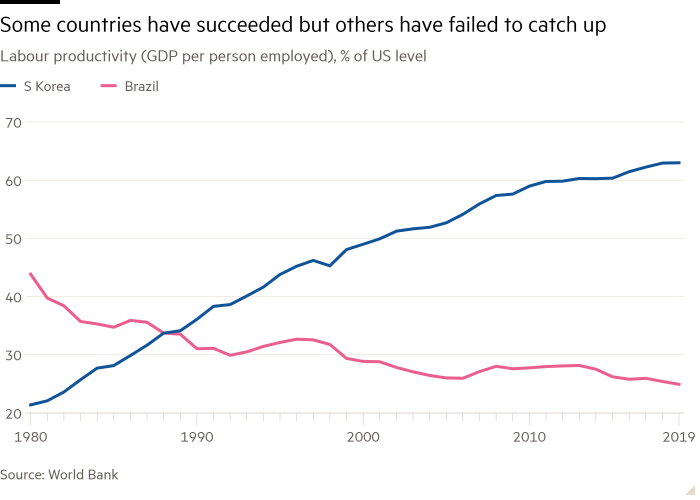
The most populous country to have become a high-income country since 1990 is South Korea. Meanwhile, important countries have failed to converge. Brazil is an example. Once successful, Chile has also stumbled. Above all, average incomes per head of middle-income countries have stayed below 10 per cent of US levels since 1970.
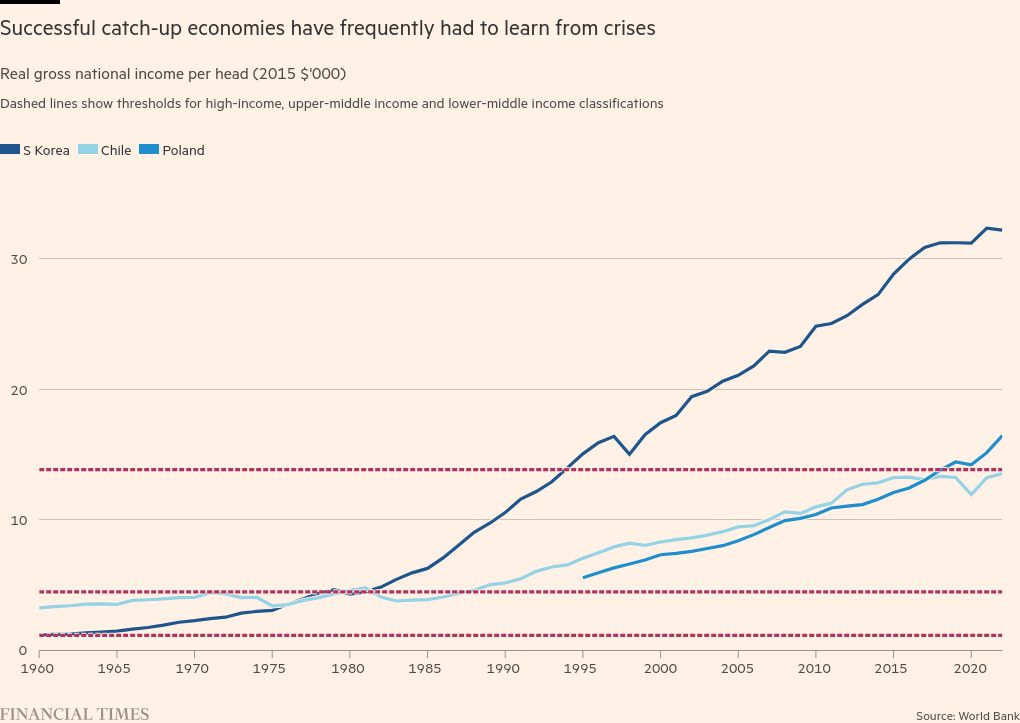
This record is worrying, whether or not the notion of a “trap” is statistically significant. Moreover, adds the WDR, the path that works for low-income countries will not work for more advanced ones. It notes, crucially, that the gap between GDP per worker in middle-income countries and the US is far greater than the gap in availability of physical and human capital. Thus, the principal failure of middle-income countries lies not in accumulating too little capital, but in using it so poorly.
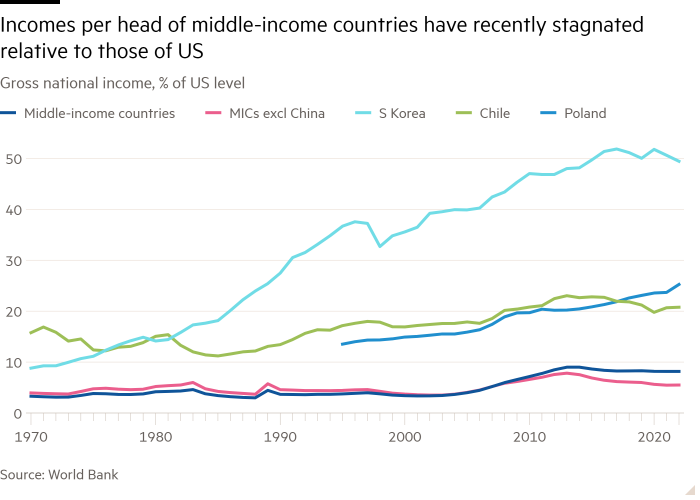
The idea here is that the focus must shift from investment per se to infusion of new ideas available abroad, and then on to domestic innovation. What is needed, in sum, is development of a more sophisticated economy. That depends on the acquisition and development of knowhow. Infusion depends on the supply of skilled workers (engineers, scientists, managers) and openness to ideas from elsewhere (notably through direct investment and trade). Korea has had dramatic success with these approaches. Its focus on exports was particularly significant in facilitating infusion. The EU has similarly promoted infusion in Poland and other countries that became members recently. For innovation, exchanges of human capital are particularly important, including via education and work abroad. The resulting diasporas are a huge potential asset. Innovation also depends on access to global markets.
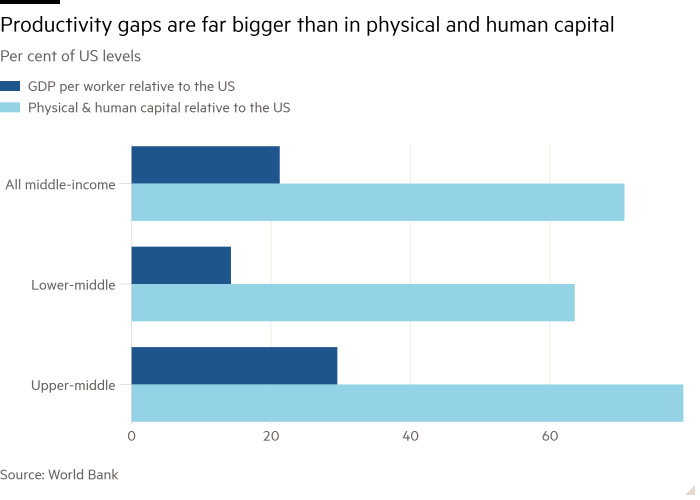
The WDR argues that countries need to internalise Joseph Schumpeter’s celebrated concept of “creative destruction”, as updated by the work of Philippe Aghion and Peter Howitt. The essential step is to force incumbents to compete, encourage entrants and open the economy to those who were historically outsiders. This involves both creation and destruction. The latter tends to be accelerated by crises. This was notably true in the case of Korea. Social mobility is about 40 per cent lower in middle-income countries than in high-income ones. That must change.
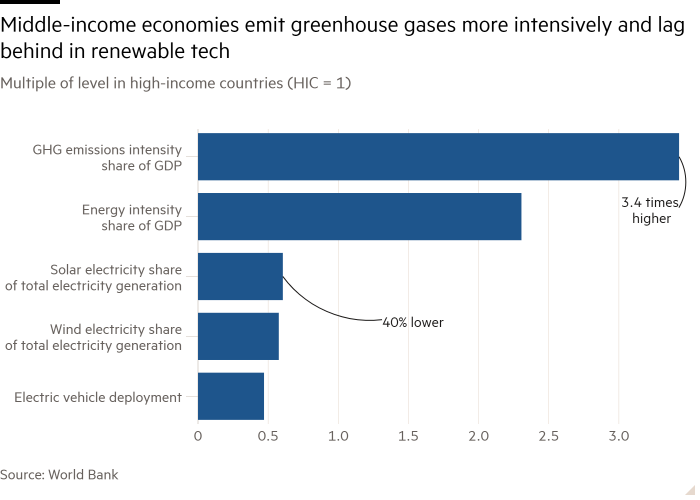
Creative destruction is also necessary if the energy transition is to accelerate. Middle-income countries tend to waste energy and have shifted too slowly towards renewables, even though many have exceptional potential. Part of the problem is the high cost of capital, itself the result of high levels of uncertainty. Improvements in institutions, with the aim of increasing predictability and security, will help. Above all, societies and economies need to become more open and meritocratic.
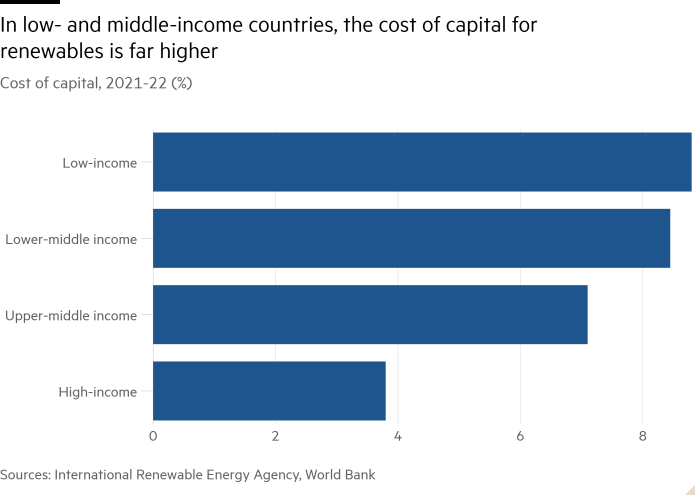
None of this is easy anywhere, not least in developing countries. Alas, the rise of protectionism and consequent fragmentation of the world economy are likely to make their prospects worse. Yes, there will be opportunities, too, as some importers shift from their present reliance on China. But integration has unquestionably been a dominant force behind the development successes of the recent past: as the WDR notes, “further protectionism can potentially worsen the diffusion of knowledge to low- and middle-income countries”. Similarly, expensive borrowing will make the complementary investments that will be needed harder to afford.
Growth prospects are worsening. Hopes for a better world fade with them.
Follow Martin Wolf with myFT and on Twitter